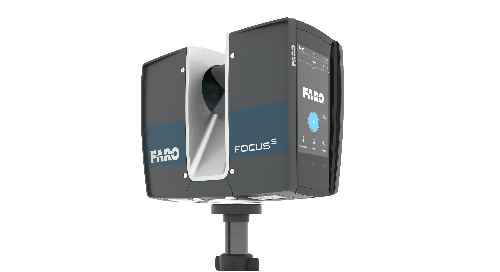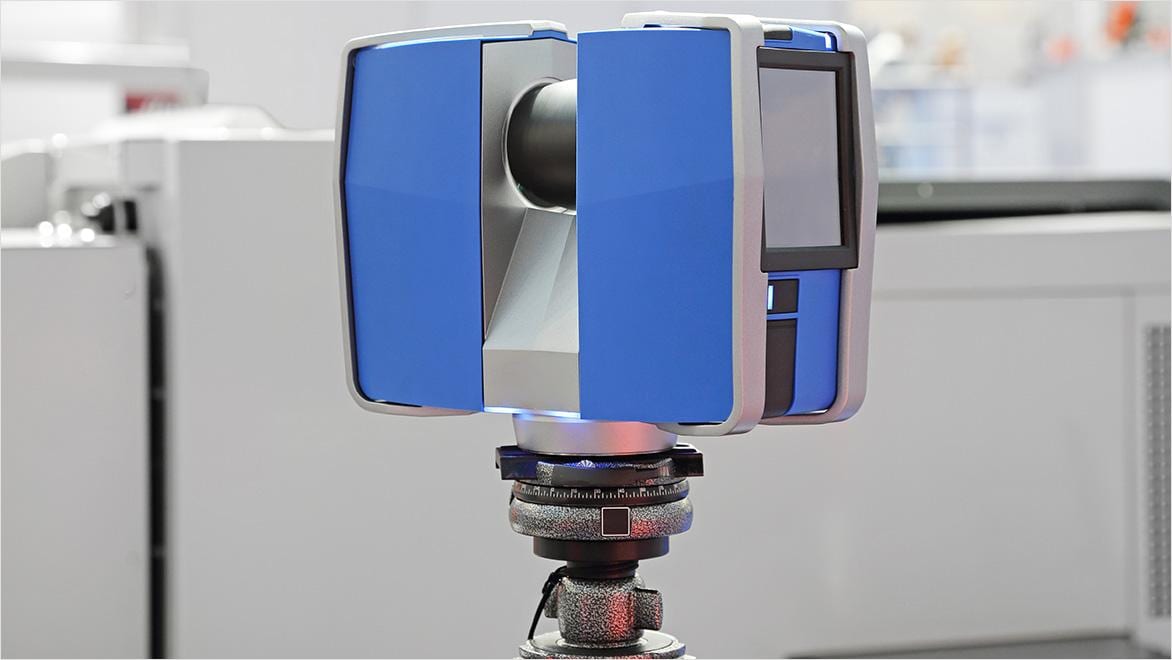A Practical Introduction to Using 3D Scanning in Design Development
Wiki Article
Exploring the Applications of 3D Laser Scanning in Archaeology and Cultural Heritage Preservation
The assimilation of 3D laser scanning technology in archaeology and cultural heritage conservation notes a considerable advancement in how historic sites and artefacts are documented and evaluated. This non-invasive approach supplies specific spatial data, revealing complex information that were previously challenging to record. As the applications of this innovation remain to progress, numerous effects for education and learning, documents, and conservation arise, inviting further exploration right into its transformative impact on the area.Recognizing 3D Laser Scanning Innovation
3D laser scanning technology has revolutionized the area of archaeology by giving exact and comprehensive spatial data. This innovative modern technology utilizes laser beam of lights to capture countless information points from a things or website, developing a highly accurate three-dimensional depiction (3D Scanning). The resulting factor clouds can expose detailed details of historical sites, structures, and artefacts that could be undetectable to the naked eyeUsing this modern technology, excavators can document the exact measurements, shapes, and positions of objects with unmatched accuracy. This technique reduces the danger of human error and gets rid of the need for extensive hands-on measurements. Moreover, the information collected can be assessed and shared easily, helping with partnership among researchers. By integrating 3D laser scanning with GIS and other digital tools, excavators improve their capacity to envision and translate historic contexts, resulting in much deeper insights into ancient societies and settings.
Enhancing Archaeological Documents
3D laser scanning considerably boosts archaeological paperwork with its capacity to create exact site maps. This technology helps with detailed artifact analysis, providing insights that standard techniques might overlook. Furthermore, it ensures the conservation of contextual information, which is crucial for understanding the connections within archaeological websites.Accurate Site Mapping
While traditional mapping techniques often deal with recording the intricate details of historical websites, advanced laser scanning technology supplies a cutting edge technique to accurate site mapping. This technique makes it possible for archaeologists to develop very outlined and precise three-dimensional representations of websites, showcasing topographical variations and structural functions with impressive fidelity. The ability to record numerous information factors in a matter of minutes permits extensive paperwork, which can be conveniently updated and shared among scientists. In addition, laser scanning promotes the dimension of intricate geometries that would certainly be tough to evaluate using conventional tools. As a result, this innovation enhances the precision of site maps, contributing substantially to the conservation and understanding of social heritage sources.Detailed Artefact Analysis
Laser scanning modern technology significantly enhances the evaluation of archaeological artefacts, providing researchers with unmatched information and precision. This method captures elaborate surface area textures, measurements, and features that traditional documentation strategies may ignore. By creating high-resolution 3D designs, scholars can closely analyze artifacts without the threat of damages integral in physical handling. This precision enables far better comparative researches, making it possible for professionals to recognize production methods, stylistic variations, and possible cultural significance. The capability to adjust and imagine information in three measurements assists in a deeper understanding of artifact capability and use. Generally, laser scanning fosters an extra extensive method to archaeological documents, guaranteeing that necessary info regarding artefacts is preserved for future research study and education.Preservation of Contextual Information
Preserving contextual data is important for boosting historical documentation, as it ensures that searchings for are recognized within their initial environmental and cultural structures. 3D laser scanning technology significantly contributes to this preservation effort by catching in-depth spatial partnerships amongst artefacts, frameworks, and their settings. By generating exact 3D designs, archaeologists can document the precise areas and alignments of things sitting, promoting a comprehensive understanding of their context. This technology enables researchers to take another look at and evaluate websites long after excavation, keeping the stability of contextual details. Additionally, electronic records created via scanning can be shared globally, fostering collective research study and public engagement. Eventually, protecting contextual information with 3D laser scanning improves historical stories and promotes a much more profound admiration of social heritage.Conservation of Cultural Heritage Sites
As developments in modern technology remain to advance, the conservation of social heritage websites has ended up being significantly dependent on cutting-edge techniques such as 3D laser scanning. This technology permits for the in-depth paperwork of landscapes, artifacts, and structures, capturing their precise dimensions and spatial partnerships in a non-invasive fashion. By producing high-resolution 3D designs, researchers can check and analyze deterioration patterns, allowing aggressive preservation approaches.Additionally, 3D laser scanning helps with the sharing of detailed website data with the global area, advertising partnership among guardians, excavators, and chroniclers. These versions act as invaluable resources for education and learning and public interaction, elevating awareness of cultural heritage concerns. In addition, the electronic documents produced can safeguard versus loss as a result of environmental variables, vandalism, or neglect. On the whole, 3D laser scanning represents a transformative strategy to the conservation of social heritage, guaranteeing that these websites can be studied and appreciated by future generations.

Restoration and Repair Initiatives
The thorough paperwork accomplished through 3D laser scanning plays a considerable function in repair and repair efforts within archaeology. This modern technology offers exact measurements and high-resolution imagery, enabling precise electronic designs of artefacts and structures. These here designs work as essential recommendations during reconstruction procedures, enabling excavators to make and visualize the original layout educated decisions about materials and strategies needed for repair.3D laser scanning facilitates the reconstruction of harmed or shed aspects by producing thorough replicas. This procedure help in making sure that restorations maintain historical stability while likewise allowing for cutting-edge approaches to bring back websites. The ability to analyze wear patterns and structural weak points with scanned data enhances understanding of a site's historic context and its usage in time. As a result, 3D laser scanning not only maintains the physical elements of social heritage but likewise enhances the narrative of history, leading future remediation endeavors.
Educational and Research Study Opportunities
The integration of 3D laser scanning in archaeology opens up significant academic and research possibilities. Academic collaborations can enhance the understanding of ancient sites, while specialized training workshops equip specialists with important skills for using this innovation. With each other, these campaigns promote a richer involvement with historical techniques and methodologies.Academic Collaborations in Archaeology
Collaborative efforts in archaeology have actually ended up being progressively important for advancing both academic and study opportunities. By cultivating collaborations among universities, study organizations, and cultural heritage companies, these partnerships help with the exchange of understanding and sources, enhancing the quality of archaeological researches. Joint projects often leverage varied knowledge, enabling innovative techniques and complete analyses, especially in the application of technologies like 3D laser scanning. Such collaborations likewise promote interdisciplinary approaches, engaging areas such as history, conservation, and location scientific research. On top of that, academic partnerships commonly result in the growth of new curricula and training programs, preparing the next generation of excavators to properly utilize sophisticated innovations in their job. Eventually, these partnerships add to the preservation and understanding of social heritage.Educating Workshops for Professionals
Educating workshops for experts in archaeology are progressively important for enhancing abilities in the application of advanced technologies such as 3D laser scanning. These workshops supply individuals with hands-on experience in making use of cutting-edge devices and software, promoting a deeper understanding of information capture and evaluation processes. Experts can find out to develop accurate electronic designs of historical websites, which significantly aid in documents and preservation efforts. Furthermore, these training sessions usually consist of conversations on best practices and instance research studies, advertising knowledge see this page exchange amongst individuals. By buying continual education, specialists can remain upgraded on progressing modern technologies, eventually boosting the performance of their research study and cultural heritage conservation initiatives. This commitment to ability enhancement is crucial for advancing the area of archaeology.Future Fads in 3D Laser Scanning for Archaeology
As innovations in technology proceed to reshape numerous fields, the future of 3D laser scanning in archaeology guarantees to enhance both the precision and performance of website paperwork and analysis. Arising fads indicate a growing integration of artificial knowledge and equipment learning, assisting in automated information handling and analysis. This development will certainly allow excavators to assess intricate datasets quicker, resulting in faster insights right into historic contexts.Additionally, the combination of drone technology with 3D laser scanning is most likely to expand, enabling complete airborne studies of historical sites that are hard to access. The raising cost of scanning tools will certainly equalize accessibility, equipping smaller sized institutions and independent scientists to make use of these tools successfully. In addition, developments in digital truth and boosted truth will make it possible for immersive experiences for public interaction and education and learning, making historical searchings for more easily accessible and interactive. These trends collectively signal a transformative future for archaeology, boosting conservation efforts and increasing the technique's outreach.
Often Asked Inquiries
How Much Does 3D Laser Scanning Devices Price?

What Are the Limitations of 3D Laser Scanning?
The restrictions of 3D laser scanning include high expenses, possible data processing obstacles, level of sensitivity to ecological problems, and problem recording complex details in complicated surfaces, which can influence the accuracy and efficiency of checked representations. (3D Scanning)
Can 3D Laser Scanning Be Used Underwater?
Yes, 3D laser scanning can be utilized undersea, but it requires specialized devices and methods to conquer difficulties such as water distortion and minimal visibility. Successful applications the original source have been demonstrated in marine archaeology and undersea surveys.For how long Does a Scanning Task Typically Take?
A scanning task normally takes anywhere from a couple of days to a number of weeks, depending on the complexity and size of the location being scanned, in addition to the prep work and post-processing requirements involved in the project.Exist Details Software Program Needs for Processing 3D Scans?
Yes, details software application needs for refining 3D scans include programs with the ability of handling big point clouds, such as Autodesk Wrap-up, Cyclone, or MeshLab. These devices assist in analysis, visualization, and integration right into numerous applications efficiently.The integration of 3D laser scanning technology in archaeology and social heritage preservation notes a significant advancement in just how historic websites and artifacts are recorded and assessed. 3D laser scanning modern technology has actually revolutionized the field of archaeology by giving detailed and precise spatial information. As advancements in innovation continue to progress, the preservation of cultural heritage websites has come to be progressively reliant on innovative approaches such as 3D laser scanning. As advancements in innovation continue to reshape different areas, the future of 3D laser scanning in archaeology promises to improve both the precision and performance of site paperwork and evaluation. The assimilation of drone innovation with 3D laser scanning is likely to broaden, making it possible for extensive airborne studies of archaeological websites that are challenging to gain access to.
Report this wiki page